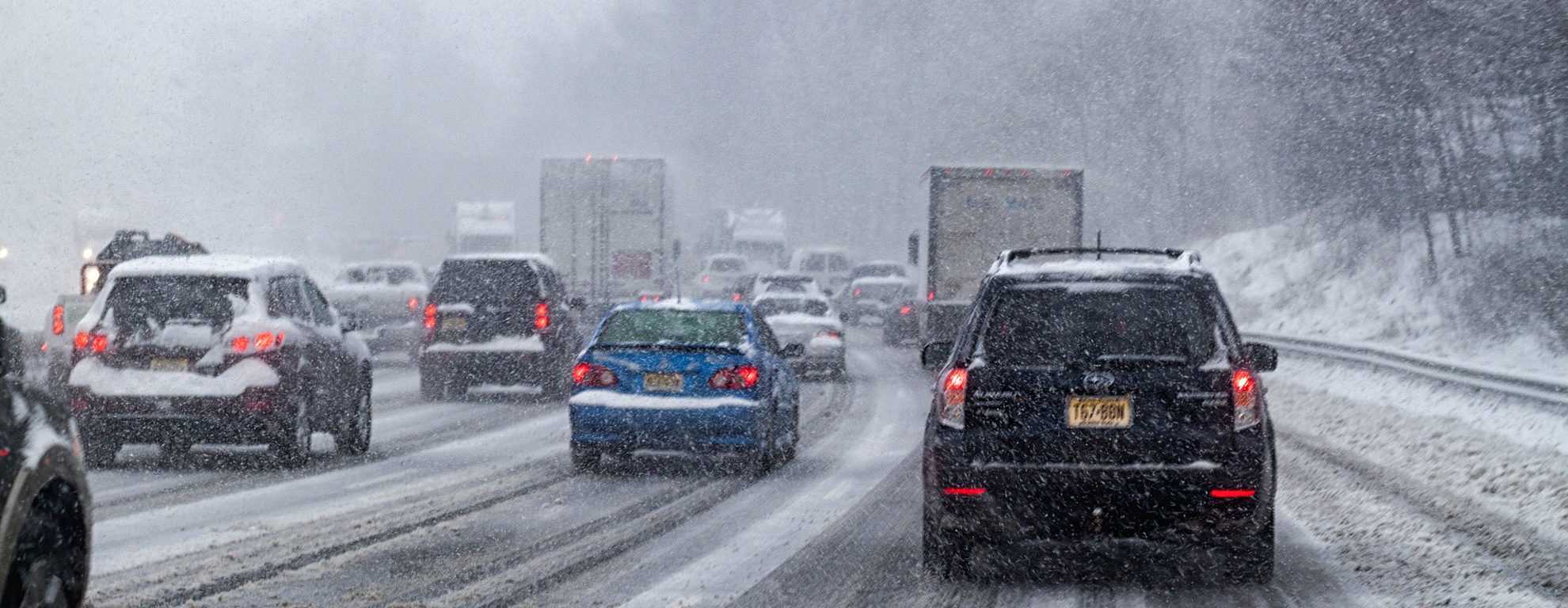Bad Weather Driving Tips

We all know that the weather has a huge impact on how we drive and can affect the driving conditions on the roads. Weather is unpredictable and changes very quickly, making big differences to our normal driving. Adverse weather conditions like wet, icy, snowy and fog can all make roads very treacherous.
Our experienced drivers, here at I Love meet and greet, are very aware of the impact the weather can have on their driving and how it affects the driving conditions around the airport so they have put together some simple tips to remember when getting in your car in bad weather.
Driving in Wet Weather
In wet weather, stopping distances will be at least double those required for stopping on dry roads as your tyres have less grip on the road. As road surfaces become more slippery it is advisable to keep well back from the vehicle in front and slow down.
Rain and spray from vehicles will also reduce visibility and make it difficult to see and been seen, so turn on your lights.
If your steering becomes unresponsive, water is preventing the tyres from gripping so ease off the accelerator and slow down.
Driving in Foggy Weather
If you are driving in foggy conditions and visibility is seriously reduced, make sure you turn on your fog lights. Fog lights or low beam headlights cut through fog as they are close to the ground, so the beams illuminate the road better.
Keep a safe distance between you and the vehicle in front and slow down. Be prepared, if you suddenly encounter a heavy fog bank and the fog becomes too thick, pull safely and completely off the road and continue driving when the fog lifts.
Remember to turn off your fog lights when visibility improves.
Driving in Icy and Snowy Weather
The Department of Transport’s Highway Code recommends that if the weather forecast is for warnings of icy or snowy weather, then drivers should not drive in these conditions unless your journey is essential.
If your journey is essential, then you should take great care and allow extra time to get to your destination. Pack an emergency kit which includes a de-icer and ice scraper, torch, warm clothing, boots, jump leads and a shovel, together with a warm drink and food in case you get stuck or your vehicle breaks down.
Before you set off clear all snow and ice from all your windows and car and ensure your lights are clean and number plates are visible.
Braking distances in snowy or icy weather can be multiplied by ten than for those required on dry road so when driving in icy or snowy weather, drive with extreme care and keep back from the vehicle in front of you. Drive at a slow speed in as high a gear as possible to avoid wheel spin and accelerate and brake very gently, avoiding any sudden actions.
More Driving Tips
For more driving tips please visit I Love meet and greet’s tips on how to stay safe while driving at night.
By Sarah Anglim at 30 Jan 2018